Your cart is currently empty!
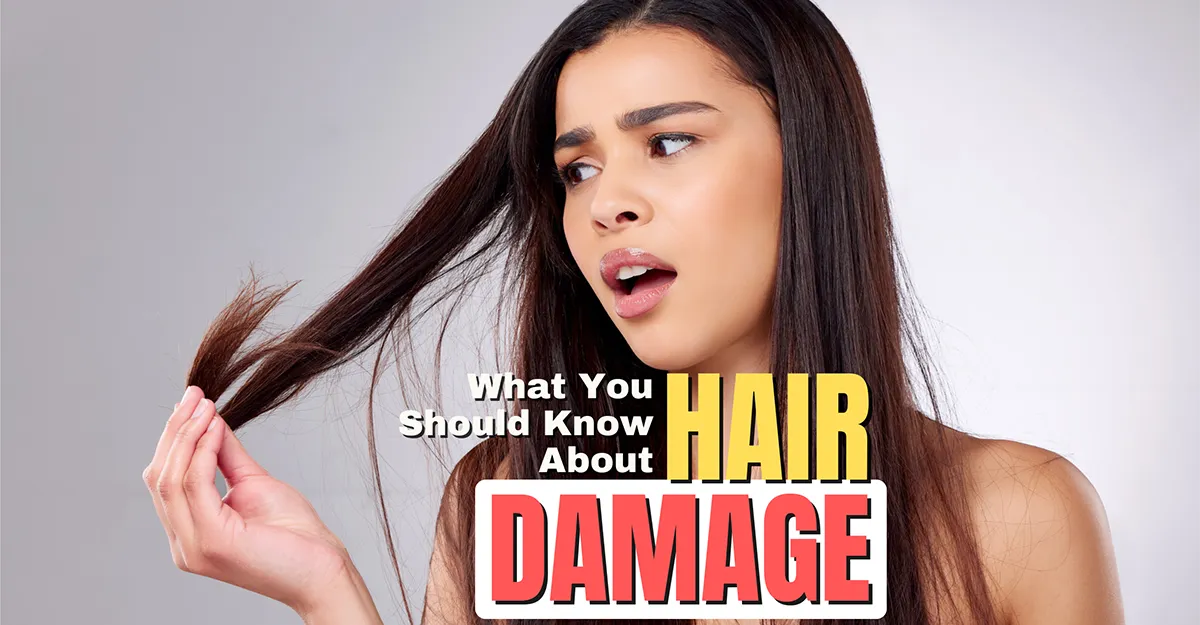
Are you tired of looking in the mirror and seeing dry, damaged hair? You’re not alone—many people struggle with hair damage that can sneak up unnoticed until it’s a significant problem. With the right care, however, you can prevent breakage and restore your hair’s natural shine.
Welcome! I’m Dr. Pooja Gupta, your friendly dermatologist with over 15 years of experience in hair and skin care. Today, I’m excited to share effective strategies on how to prevent hair damage and rejuvenate unhealthy hair. Let’s dive in!
Key Takeaways
- Protect your hair from heat styling by using heat protectants and limiting exposure.
- Adopt gentle styling habits to prevent breakage and stress on your hair.
- Practise proper hair washing techniques to maintain natural moisture and scalp health.
- Be cautious with chemical treatments and give your hair time to recover between sessions.
- Shield your hair from environmental damage like UV rays, pollution, and harsh weather.
- Revive damaged hair with targeted treatments, nourishing masks, and professional therapies.
Skip ahead to prevention and repair tips.
Hair Damage
Hair damage manifests in various forms, each with distinct signs and causes. Understanding the types of hair damage, along with the internal and external factors influencing them, can aid in effective prevention and treatment strategies.
Types of Hair Damage and Their Signs
1. Split Ends (Trichoptilosis)
Split ends are those annoying, frayed, or split hairs at the tips of your locks. They can be a real pain, causing your hair to get all tangled up and break easily. There are a few things that can cause split ends, like using too much heat from blow dryers or curling irons, which can dry out your hair and make it more likely to split.
Chemical treatments like bleaching and perming can also weaken your hair and make it more prone to splitting. And sometimes, it’s not just what you do to your hair, but what you don’t do. If you’re not getting enough protein or vitamins in your diet, your hair may not be as strong as it should be, which can also lead to split ends.
2. Breakage
Breakage manifests in hair that might be brittle, breaking off easily, and looking uneven in length. This can happen due to external and internal factors. External factors include rough brushing or styling, sun exposure, and chlorine from pools. These can put mechanical stress on your hair and weaken it. Internal factors like hormonal changes during pregnancy or menopause can also affect your hair’s resilience.
3. Dryness
Dry hair can be a common problem, making it appear dull and feel rough to the touch. Several factors contribute to dryness. External factors include over-washing or using harsh shampoos, which can strip natural oils from the hair. Heat styling, such as blow-drying or flat ironing, can also contribute to moisture loss. On the other hand, internal factors like aging can reduce natural oil production, leading to dryness.
4. Frizz
Frizz is a common hair problem that can make your hair look unruly and unmanageable with strands sticking out in different directions. It’s caused by a combination of external and internal factors. External factors include things like humidity, which can cause your hair to swell and frizz, and chemical treatments that damage the cuticle layer of your hair. Internal factors include genetic predisposition, which means that some people are more likely to experience frizz than others.
5. Thinning Hair
Hair damage can also be characterised by hair thinning, which is visually apparent as a noticeable reduction in hair volume, which can make your scalp more visible. External factors like tight hairstyles that pull on hair follicles can lead to a condition called traction alopecia. Internal factors like hormonal imbalances, such as thyroid problems, and nutritional deficiencies can also contribute to hair thinning.
6. Dullness
Another type of hair damage makes our hair look dull and lifeless, lacking its usual shine. This can be caused by various factors. External factors like environmental pollutants and excessive heat styling can damage the hair shaft, reducing its shine. Additionally, nutritional deficiencies that affect our overall health can lead to lackluster-looking hair.
Causes of Hair Damage
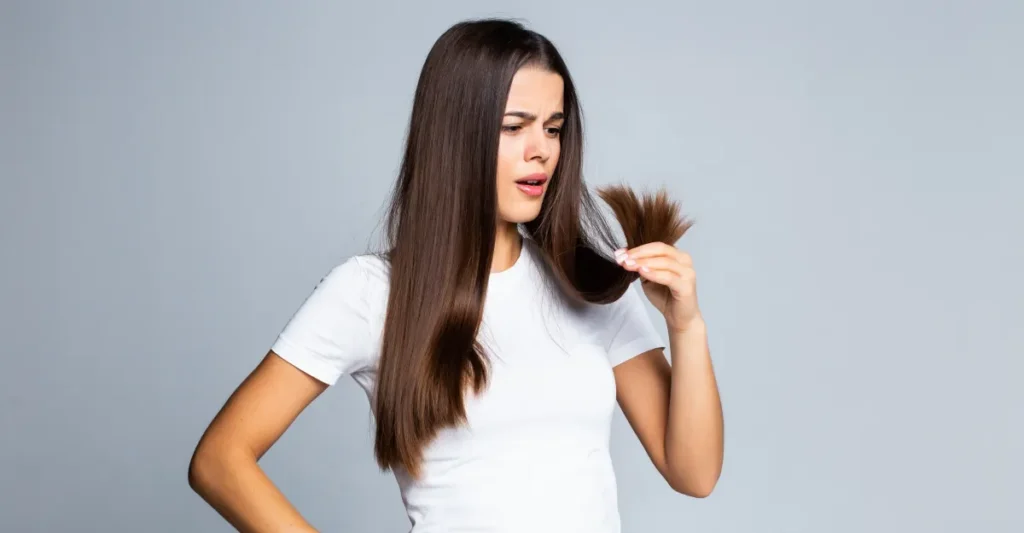
Hair damage can be attributed to a variety of external and internal factors. Here’s an expanded overview of these causes, with at least six factors in each category.
External Factors of Hair Damage
1. Heat Styling: Regular use of heat styling tools, such as blow dryers and flat irons, can lead to moisture loss and weaken hair strands, resulting in dryness and brittleness.
2. Chemical Treatments: Hair colouring, perming, and relaxing involve harsh chemicals that can alter the hair’s structure, leading to breakage and split ends.
3. Environmental Stressors: Sun exposure, pollution, chlorine from swimming pools, and saltwater can dehydrate hair and cause oxidative stress, leading to damage.
4. Improper Hair Care: Using inappropriate hair products (e.g., those containing sulphates or alcohol) and not conditioning properly can strip hair of its natural oils and moisture.
5. Physical Damage: Rough handling during brushing or styling, tight hairstyles (like ponytails or braids), and using rubber bands can create mechanical stress that leads to breakage.
6. Lack of Protection: Not protecting hair from environmental elements (like UV rays or wind) can exacerbate damage. For instance, failing to wear hats in the sun can lead to fading and dryness.
Internal Factors of Hair Damage
1. Nutritional Deficiencies: A lack of essential nutrients such as vitamins (A, C, D, E), minerals (zinc, iron), and proteins can weaken hair structure, leading to thinning or breakage.
2. Hormonal Changes: Fluctuations in hormones due to pregnancy, menopause, or thyroid disorders can affect hair growth cycles and lead to increased shedding or damage.
3. Health Conditions: Certain medical conditions like autoimmune disorders (e.g., alopecia areata) or scalp infections can directly impact hair health and lead to loss or damage.
4. Stress: High levels of psychological stress can trigger conditions like telogen effluvium, where hair follicles prematurely enter a resting phase, leading to increased shedding.
5. Ageing: As people age, the natural production of proteins like keratin decreases, leading to thinner hair that is more prone to damage.
6. Genetic Factors: Genetic predispositions can determine hair texture and strength; individuals may inherit traits that make their hair more susceptible to damage from external factors.
Understanding these factors is crucial for developing effective strategies for maintaining healthy hair and preventing damage.
Influence of Internal and External Factors on Hair Damage Types
- Split Ends are primarily caused by heat treatment and chemical processes but can also be influenced by nutritional deficiencies that weaken hair structure.
- Breakage results from both external factors like rough handling and internal factors such as hormonal changes that affect hair strength.
- Dryness is significantly impacted by external factors like heat styling and washing habits, while ageing internally reduces oil production.
- Frizz tends to be exacerbated by environmental conditions and internal genetic factors that dictate how hair reacts to humidity.
- Thinning Hair is often linked to external factors such as tight hairstyles and internal hormonal imbalances or nutritional issues.
- Dullness results from both environmental exposure that affects the cuticle layer externally and internal health factors that influence overall vitality.
Understanding these signs and their underlying causes helps in adopting preventive measures tailored to individual hair types and conditions.
How do different hair types react to hair damage
Different hair types react to damage in various ways due to their unique structures and characteristics. Here’s an overview of how specific hair types respond to hair damage:
1. Straight Hair
People with straight hair often have smooth cuticles, making their hair shiny and less porous. However, this hair type is more prone to split ends because it lacks the natural curl that can absorb stress. Additionally, straight hair can break easily with heat styling or chemical treatments due to its lack of flexibility. While straight hair may appear greasy at the roots, it can become dry at the ends, particularly when over-washed or exposed to heat.
2. Wavy Hair
Wavy hair is a beautiful mix of straight and curly textures, giving it a unique and voluminous appearance. However, it can be more susceptible to frizz in humid environments due to its uneven cuticle layer. Without proper moisture, wavy hair can become dry and frizzy as the waves tend to trap moisture. Additionally, there’s a moderate risk of breakage, so it requires gentle handling to prevent tangles and maintain its health.
3. Curly Hair
Curly hair, characterized by its defined curls and more porous structure, tends to be dry due to the difficulty of natural oils traveling down the hair shaft. This dryness makes it prone to frizz and requires regular moisturizing treatments. Additionally, its susceptibility to breakage necessitates gentle handling and protective styling techniques. Split ends are a common occurrence, especially when curls are styled with heat or chemicals.
4. Coily/Kinky Hair
Coily or kinky hair has a tightly coiled or zigzag pattern, making it often very dry and fragile. It is highly vulnerable to breakage, so careful detangling and low-manipulation styles are essential. This hair type is prone to extreme dryness, requiring intense moisturization and sealing techniques to keep it hydrated. Additionally, coily or kinky hair is more likely to develop split ends due to its fragile nature.
5. Fine Hair
Fine hair is characterized by thin strands that can make it look limp and lacking in volume. It’s more prone to breakage from heat styling and harsh treatments because of its delicate structure. Fine hair can get oily quickly at the roots but still suffer from dryness at the ends if not cared for properly. To keep fine hair looking its best, it’s essential to use lightweight products that won’t weigh it down and provide proper nourishment to prevent dullness.
6. Thick Hair
Thick hair is characterized by wider strands that are typically stronger but can also be heavy and challenging to manage. While less prone to breakage than fine hair, it can still become damaged due to neglect or harsh treatments. If not properly moisturized, especially in humid conditions, thick hair may develop frizz. Additionally, excessive heat or lack of regular trims can result in split ends.
Understanding how different hair types react to hair damage is essential for developing effective care routines. Tailoring hair care practices—such as choosing appropriate products, minimising heat exposure, and ensuring regular hydration—can help mitigate damage and maintain healthy hair across all types.
Tips to Prevent and Repair Hair Damage
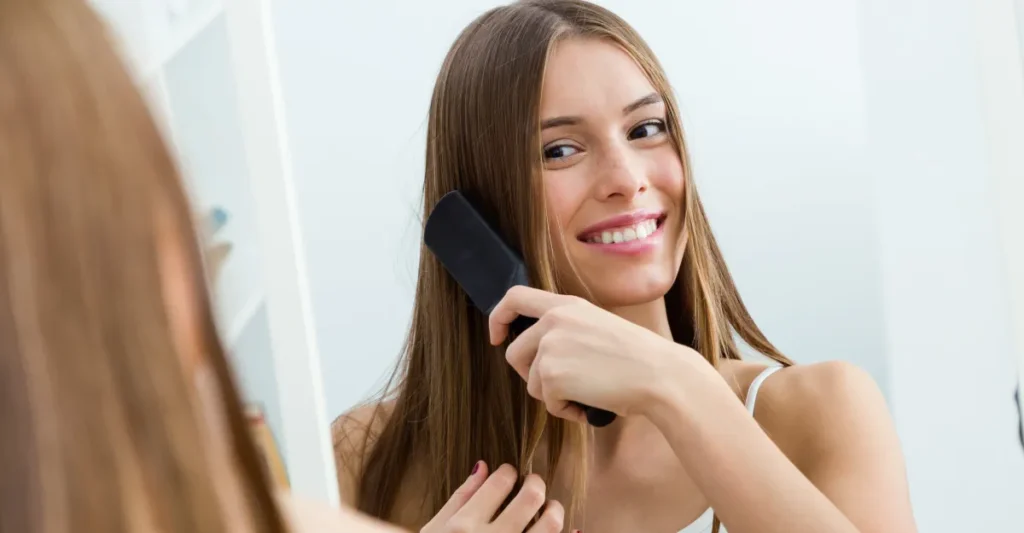
1. Protect Your Hair from Heat Styling
Heat styling is a leading cause of hair damage. Here’s how to reduce its impact:
- Always Use a Heat Protectant: Products containing silicones or keratin can act as a barrier, reducing moisture loss and protecting hair cuticles.
- Lower the Temperature: Use the lowest effective heat setting. High temperatures can weaken hair proteins, leading to breakage.
- Limit Heat Styling Frequency: Give your hair regular breaks from tools like blow dryers, straighteners, and curling irons.
- Air Dry When Possible: Let your hair dry naturally to minimise heat exposure.
- Invest in Quality Tools: Choose styling tools with ceramic plates and adjustable heat settings for even heat distribution.
- Deep Conditioning Treatments: Use a nourishing mask once a week to replenish lost moisture and strengthen your hair.
2. Gentle Styling to Prevent Breakage
Daily styling habits significantly impact your hair’s health:
- Avoid Tight Hairstyles: Styles that pull on your hair can cause tension and breakage. Opt for looser styles to reduce stress on the hair shaft.
- Use Gentle Hair Ties: Silk or fabric-covered bands are kinder to your hair than elastic or rubber bands.
- Rotate Your Hairstyles: Changing your style regularly prevents constant pressure on the same areas, reducing the risk of breakage.
- Protect Hair While Sleeping: Sleep with a loose braid or ponytail to prevent tangles and friction.
- Be Gentle with Wet Hair: Hair is more fragile when wet. Use a wide-tooth comb and avoid vigorous brushing.
- Choose Satin or Silk Pillowcases: These materials reduce friction compared to cotton, helping prevent hair damage overnight.
3. Hair Washing Habits That Make a Difference
Proper washing techniques help maintain your hair’s natural oils and health and prevent hair damage:
- Use Lukewarm Water: Hot water can strip natural oils, leading to dryness and frizz.
- Opt for Sulphate-Free Shampoos: These are gentler and help retain your hair’s natural moisture.
- Don’t Over-Wash: Washing 2-3 times a week is sufficient for most hair types, preserving essential oils.
- Weekly Deep Conditioning: Keeps hair hydrated and less prone to brittleness.
- Scalp Care: Regular scalp massages stimulate blood flow, promoting healthy hair growth.
- Thorough Rinsing: Ensure all products are rinsed out to prevent residue buildup, which can weigh hair down and cause dullness.
4. Chemical Treatments and Hair Damage
Chemical processes can weaken hair if not managed carefully:
- Space Out Treatments: Allow at least 6-8 weeks between colorings or chemical treatments to let your hair recover.
- Choose Gentler Options: Opt for ammonia-free dyes or less harsh treatments when possible.
- Seek Professional Services: A trained stylist can minimise damage during chemical processes.
- Use Protective Styles Post-Treatment: Styles like braids or twists can protect your hair as it recovers.
- Hydrate After Treatments: Use masks and conditioners rich in proteins and natural oils to restore moisture.
- Embrace Low-Maintenance Styles: Reducing the need for frequent touch-ups helps maintain hair health.
5. Protect Your Hair from Environmental Damage
Environmental factors can be harsh on your hair and lead to hair damage:
- UV Protection: Use hair products with SPF or wear a hat to shield your hair from sun damage.
- Limit Exposure to Chlorine and Saltwater: Rinse hair before and after swimming; consider wearing a swim cap.
- Combat Humidity: Anti-frizz serums can protect the hair cuticle in humid conditions.
- Guard Against Wind Damage: Secure your hair in protective styles during windy conditions to prevent tangling.
- Maintain Moisture in Dry Climates: Use leave-in conditioners to combat the drying effects of low humidity.
- Regular Cleansing: Remove environmental pollutants by washing your hair regularly with a gentle shampoo.
6. Treating Already Damaged Hair
If your hair is showing signs of damage, these steps can help restore its vitality:
- Use Repairing Hair Products: Shampoos and conditioners formulated for damaged hair can strengthen and repair.
- Avoid Heat Styling: Give your hair a break from heat to prevent further damage.
- Apply Hydrating Hair Masks: Ingredients like argan oil, shea butter, and coconut oil can deeply nourish and repair.
- Leave-In Conditioners and Serums: These products can smooth frizz and protect hair throughout the day.
- Scalp Treatments: Regular oil massages with warm oils like jojoba or almond can promote scalp health and hair growth.
- Professional Treatments: Consider salon services like keratin treatments or protein therapies to rebuild hair strength.
Caring for your hair requires consistency and a gentle approach. By incorporating these strategies into your routine, you can prevent damage and revive your hair’s natural beauty. Remember, patience is key—regular care will lead you to smoother, shinier hair that’s full of life.
I would recommend our Trqois Terra Scalp & Hair Rescue Serum, which is a Kudzu-based formulation that helps in these conditions.
If you’re struggling with hair loss, you can explore minoxidil as a treatment options.
Frequently Asked Questions (FAQ)
Q: How often should I use a deep conditioning treatment?
A: For most hair types, using a deep conditioning treatment once a week helps maintain optimal moisture and strength. If your hair is severely damaged, consider increasing it to twice a week until improvement is noticed.
Q: Can I repair split ends without cutting my hair?
A: While some products can temporarily seal split ends and repair hair damage, the only permanent solution is to trim them. Regular trims every 6-8 weeks prevent split ends from travelling up the hair shaft.
Q: Are natural oils effective for hair repair?
A: Yes, natural oils like coconut, argan, and olive oil can penetrate the hair shaft, providing nourishment and reducing protein loss in both damaged and undamaged hair.
Q: How does diet affect hair health?
A: A balanced diet rich in vitamins, minerals, and proteins supports hair growth and strength. Nutrients like biotin, omega-3 fatty acids, and vitamins A, C, and E are particularly beneficial.
Q: Is it bad to wash my hair every day?
A: Washing hair daily can strip it of natural oils, leading to dryness and damage. Unless you have an excessively oily scalp, it’s advisable to wash your hair 2-3 times a week.
Q. What is the best way to fix damaged hair at home?
A: To repair damaged hair at home, start by reducing heat styling and using a heat protectant for hair when you do style it. Incorporate hydrating hair masks into your routine weekly, focusing on ingredients like argan oil, coconut oil, and shea butter. Opt for sulphate-free shampoos and conditioners formulated for damaged hair to gently cleanse and nourish your strands.
Q. How can I prevent hair breakage during sleep?
A: To prevent hair breakage at night, sleep on a satin or silk pillowcase to reduce friction. Alternatively, wrap your hair in a silk scarf or wear a loose braid or ponytail. These methods help minimise tangling and stress on the hair shaft while you sleep.
Q. What professional treatments are available for severely damaged hair?
A: Professional treatments such as keratin treatments, protein therapies, and deep conditioning salon treatments can help rebuild hair strength and restore shine. Consult with a professional stylist to determine the best treatment for your hair type and level of damage.
Q. How does UV radiation affect my hair, and how can I protect it?
A: UV radiation can degrade the protein structure of hair, leading to dryness, brittleness, and colour fading. To protect your hair from UV damage, use hair products that offer UV protection for hair or wear hats and scarves when spending extended periods in the sun.
For more expert advice, feel free to reach out or leave a comment below. Your journey to healthier hair starts here!
Discover Trqois Terra, India’s first Kudzu-based skin and hair care line, available at pharmacies in South Delhi and Gurugram, as well as on Amazon and Flipkart. Also available on our online store.
References
- Lee JH, Choi S. Deciphering the molecular mechanisms of stem cell dynamics in hair follicle regeneration. Exp Mol Med. 2024 Feb;56(1):110-117. doi: 10.1038/s12276-023-01151-5. Epub 2024 Jan 5. PMID: 38182654; PMCID: PMC10834421. https://www.ncbi.nlm.nih.gov/pmc/articles/PMC10834421/
- Kim YD, Jeon SY, Ji JH, Lee WS. Development of a classification system for extrinsic hair damage: standard grading of electron microscopic findings of damaged hairs. Am J Dermatopathol. 2010 Jul;32(5):432-8. doi: 10.1097/DAD.0b013e3181c38549. PMID: 20414091. https://pubmed.ncbi.nlm.nih.gov/20414091/
- Nishita, Y., Ezure, M., Tanji, N., Mizooku, T., Nagase, S., Osumi, T., & Ishikawa, K. (2017). Physical Properties of Shinayaka Hair and Fine Technology to Control Internal Hair Properties. Journal of the society of cosmetic chemists, 51, 126-133. https://www.semanticscholar.org/paper/7568bbf9d6e9136d23b85b859a3dfb2b9a77cff1
- Sharma, P., & Sharma, M.K. (2024). Significance of Ayurvedic Cosmetology in Contemporary Context: A Critical Review. International Research Journal of Ayurveda & Yoga. https://www.semanticscholar.org/paper/4b15c06b4750ba89b264ae49df76e4289450bdb9
- https://www.semanticscholar.org/paper/a0fb920eb0533ad2f86118c6d4c9f6d48c2a7bed
- Kleszczynski K, Fischer TW. Melatonin and human skin aging. Dermatoendocrinol. 2012 Jul 1;4(3):245-52. doi: 10.4161/derm.22344. PMID: 23467217; PMCID: PMC3583885. https://www.ncbi.nlm.nih.gov/pmc/articles/PMC3583885/
- Sherpa, P., & Amatya, A. (2020). Histomorphological evaluation of non-neoplastic cutaneous disorders. Journal of Pathology of Nepal, 10, 1695-1701. https://www.semanticscholar.org/paper/e8f819c736dad15a56e05b7ddd2b507d0afaf3a4
- Geisler AN, Oyerinde O, Scott DA. Hairstyling Practices to Prevent Hair Damage and Alopecia in Women of African Descent. Cutis. 2022 Feb;109(2):98-100. doi: 10.12788/cutis.0444. PMID: 35659800. https://pubmed.ncbi.nlm.nih.gov/35659800/
- Kudlova N, Slavik H, Duskova P, Furst T, Srovnal J, Bartek J, Mistrik M, Hajduch M. An efficient, non-invasive approach for in-vivo sampling of hair follicles: design and applications in monitoring DNA damage and aging. Aging (Albany NY). 2021 Dec 6;13(23):25004-25024. doi: 10.18632/aging.203744. Epub 2021 Dec 6. PMID: 34874896; PMCID: PMC8714131. https://www.ncbi.nlm.nih.gov/pmc/articles/PMC8714131/
- Li L, Xu K, Bai X, Wang Z, Tian X, Chen X. UCHL1 regulated by Sp1 ameliorates cochlear hair cell senescence and oxidative damage. Exp Ther Med. 2023 Jan 9;25(2):94. doi: 10.3892/etm.2023.11793. PMID: 36761006; PMCID: PMC9905655. https://www.ncbi.nlm.nih.gov/pmc/articles/PMC9905655/
- Joo, Y., & Lim, S.N. (2015). A Study of Hair Damage depending on Hair Treatment Conditions and Morphological Change in Hair. https://www.semanticscholar.org/paper/47af026b10c9b59b84d8be63b2902e779e719953
- Imagawa K, Kono T, Komaba C, Yamamoto S, Tsunoda Y, Nemoto H, Hanai U, Groff WF, Akamatsu T. Mechanism of crescent-shaped and ring-shaped epidermal damage from laser hair removal with cryogen spray cooling. Lasers Med Sci. 2022 Dec;37(9):3613-3619. doi: 10.1007/s10103-022-03640-x. Epub 2022 Sep 1. PMID: 36048276. https://pubmed.ncbi.nlm.nih.gov/36048276/
- Rele AS, Mohile RB. Effect of mineral oil, sunflower oil, and coconut oil on prevention of hair damage. J Cosmet Sci. 2003 Mar-Apr;54(2):175-92. PMID: 12715094. https://pubmed.ncbi.nlm.nih.gov/12715094/
- Rele, A.S., & Mohile, R. (1999). Effect of coconut oil on prevention of hair damage. Part I. Journal of Cosmetic Science, 50, 327-339. https://www.semanticscholar.org/paper/37f3706f326b55bfc3e2a346ac48f8f0a9755b7d
- Takahashi T, Mamada A, Kizawa K, Suzuki R. Age-dependent damage of hair cuticle: contribution of S100A3 protein and its citrullination. J Cosmet Dermatol. 2016 Sep;15(3):211-8. doi: 10.1111/jocd.12202. Epub 2015 Dec 29. PMID: 26710891. https://pubmed.ncbi.nlm.nih.gov/26710891/
More from the blog
- 5 Powerful Menopause Skincare Secrets Revealed
- 5 Powerful Ways to Stop Teen Hair Fall
- 5 Vital Shopping Tips for Skincare Products
- 5 Effective Solutions for Neck Pigmentation
- 5 Effective Ways to Stop Excessive Sweating (Hyperhidrosis)
Recommended Topics
Popular Tags
40s aging hair care biotin choosing right cobalamin collagen dry itchy skin excessive sweating excess vitamin hair care hair care in 40s hair fall hair health hair loss treatment hydroquinone hyperhidrosis menopause menopause skincare menopause skin care minoxidil neck darkening neck pigmentation perimenopause scalp allergy scalp allergy treatment scalp health shampoo shampooing side effects skin care skincare skincare products skin health sunscreen supplement safety sweating problem teen hairfall teen hair thinning too much sweat tretinoin vitamin b12 vitamin d vitamin overdose washing hair wrinkles







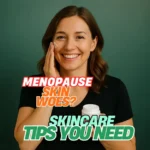
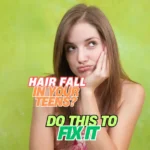


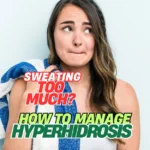
Leave a Reply